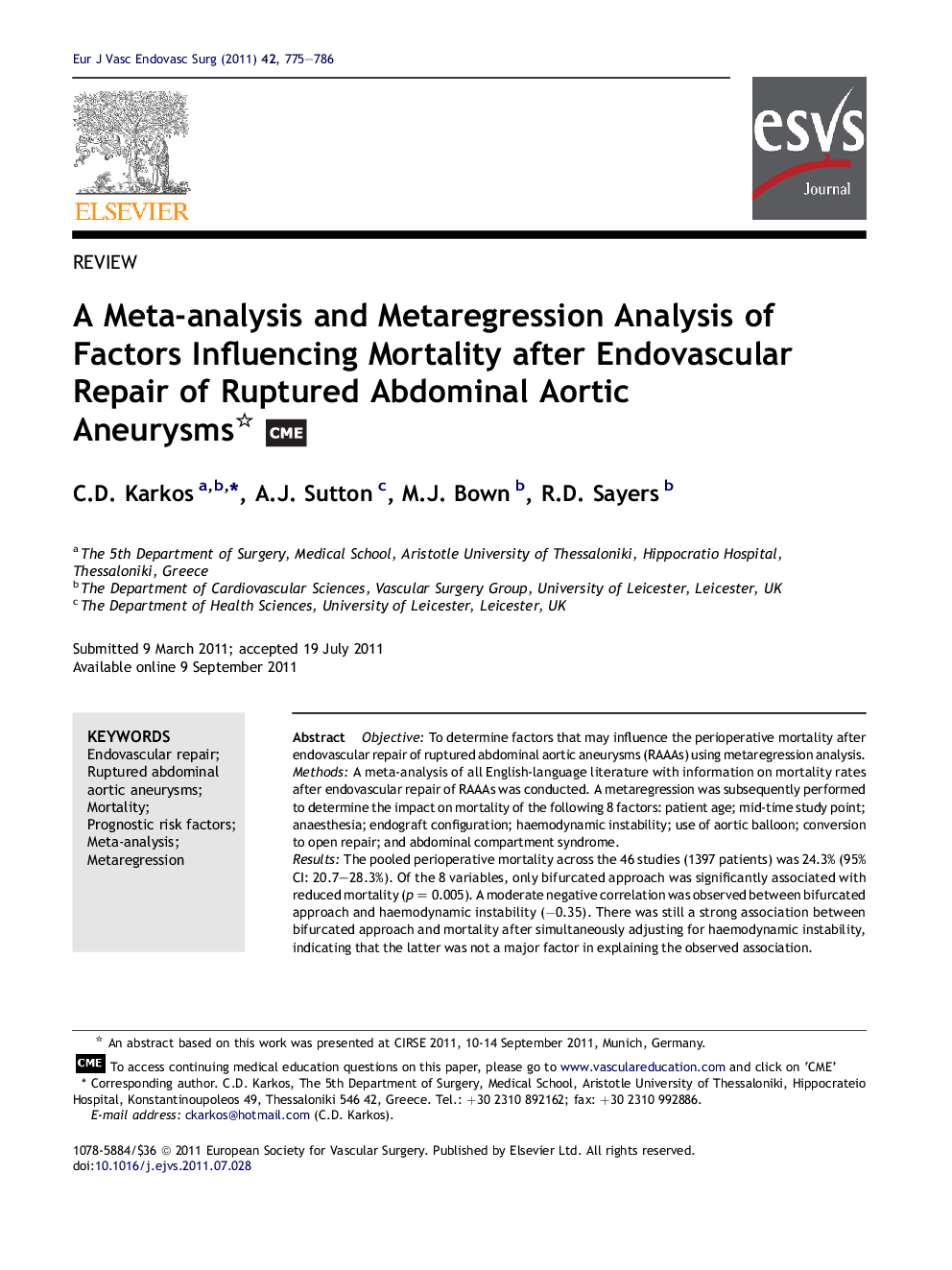| Article ID | Journal | Published Year | Pages | File Type |
|---|---|---|---|---|
| 2913907 | European Journal of Vascular and Endovascular Surgery | 2011 | 12 Pages |
ObjectiveTo determine factors that may influence the perioperative mortality after endovascular repair of ruptured abdominal aortic aneurysms (RAAAs) using metaregression analysis.MethodsA meta-analysis of all English-language literature with information on mortality rates after endovascular repair of RAAAs was conducted. A metaregression was subsequently performed to determine the impact on mortality of the following 8 factors: patient age; mid-time study point; anaesthesia; endograft configuration; haemodynamic instability; use of aortic balloon; conversion to open repair; and abdominal compartment syndrome.ResultsThe pooled perioperative mortality across the 46 studies (1397 patients) was 24.3% (95% CI: 20.7–28.3%). Of the 8 variables, only bifurcated approach was significantly associated with reduced mortality (p = 0.005). A moderate negative correlation was observed between bifurcated approach and haemodynamic instability (−0.35). There was still a strong association between bifurcated approach and mortality after simultaneously adjusting for haemodynamic instability, indicating that the latter was not a major factor in explaining the observed association.ConclusionsEndovascular repair of RAAAs is associated with acceptable mortality rates. Patients having a bifurcated endograft were less likely to die. This may be due to some surgeons opting for a bifurcated approach in patients with better haemodynamic condition. Further studies will be needed to clarify this.
